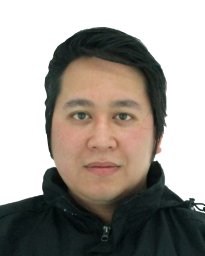Dams Overtopping Scenarios from Catastrophic Landslides in Mountains’ Headwaters: Case Study in Kobe City, Japan
DOI:
https://doi.org/10.23917/forgeo.v38i1.4080Keywords:
LiDAR, Landslides, SABO dams, Long-term SedimentationAbstract
As a Mw 8.0 Nankai Trough Earthquake is predicted with an 80% probability of occurrence within the next 30 years, the efficiency of check dams in the mountains above Kobe City is a crucial question when considering co-seismic landslide disaster risk management. In the present contribution, the author aimed to define which subsection of the Sumiyoshigawa watershed may be more prone to generate impacts downstream of Kobe City from catastrophic landslides in the headwaters. For this purpose, the present state of the check dams network was analysed from the 2018 LiDAR (Light Detection and Ranging) data, considering the progressive infilling of the structures. As a result, the capacity of the dams in 2018 dropped by about 1/10 of the original designed capacity, arguably because of the heavy rainfall events in 2014 and 2018. Despite this evolution, landslides > 20,000 m3 starting from only one tributary can fill all the dams and flow downstream. This data makes it possible to prioritise dam curation programs, especially because population ageing and shrinking are reducing the manpower and the funds available to maintain the check dams.
Downloads
References
Chiang, S. H., & Chang, K. T. (2011). The potential impact of climate change on typhoon-triggered landslides in Taiwan, 2010-2099. Geomorphology, 133 (3-4), 143-151. doi: 10.1016/j.geomorph.2010.12.028.
Chiu, Y. F., Tfwala, S. S., Hsu, Y. H., Chiu, Y. Y., Lee, C. Y., & Chen, S. C. (2021). Upstream morphological effects of a sequential check dam adjustment process. Earth Surface Processes and Landforms, 46, 2527-2539. doi: 10.1002/esp.5178.
Dumont, M., Gomez, C., Arnaud-Fassetta, G., & Lissak, C., Viel, V. (2023). The Disaster Protection System of Moun-tainous Rivers in Japan: The Example of the Akatani Watershed’s Reconstruction. Sustaina-bility, 15(21), 15331, doi: 10.3390/su1521155331.
Gomez, C., Hotta, N. (2021). Deposits’ Morphology of the 2018 Hokkaido Iburi-Tobu Earthquake Mass Move-ments from LiDAR & Aerial Photographs. Remote Sensing, 13(17), 3421. doi: 10.3390/rs13173421.
Guo, Y., Kobetsu, K,. & Ohno, T. (2013). Analysis of the rupture process of the 1995 Kobe earthquake using a 3D velocity structure. Earth, Planets and Space, 65, 1581-1586. doi:10.5047/eps.2013.07.006.
Guzzetti, F., Peruccacci, S., Rossi, M., & Stark, C.P. (2008). The rainfall intensity-duration control of shallow land-slides and debris flows: an update. Landslides, 5, 3-17. doi: 10.1007/s10346-007-0112-1.
Hashemi, S. A. A., & Kashi, H. (2015). Determination of number of check dams by artificial neural networks in arid regions of Iran. Water Science and Technology, 76(6), 952-959. doi: 10.2166/wst.2015.268.
Lin, C. W., Shieh, C. L., Yuan, B. D., Shieh, Y. C., Liu, S. H., & Lee, S. Y. (2004). Impact of Chi-Chi earthquake on the occurrence of landslides and debris flows: example from the Chenyulan River wa-tershed, Nantou, Taiwan. Engineering Geology, 71, 49-61. doi: 10.1016/S0013-7952(03)00125-X.
Liu, D., You, Y., Liu, J., Mu, Q., Feng, J., Zhang, L., Wei, A., & Tan, H. (2022). Stability analysis of check dam impacted by intermittent surge. Bulletin of Engineering and the Environment, 81 (53), 1-15. doi: 10.1007/s10064-021-02539-1.
Mizuyama, T., Tomita, Y., Ido, K., & Fujita, M. (1998). Computer-Aided Sabo facilities Planning System – A Case Study of the Sumiyohi River in the Rokko Mountains. Sabougakkaishi 50 (6), 40-43. doi: 10.21203/rs.3.rs-3753562/v1
Norman, L. M., Brinkerhoff, F., Gwilliam, E., Guertin, D. P., Callegary, J., Goodrich, D. C., Nagler, P. L., & Gray F. (2016). Hydrologic Response of Streams Restored with Check Dams in the Chiricahua Moun-tains, Arizona. River Research and Applications, 32, 519-527. doi: 10.1002/rra.2895.
Saito, H., Korup, O., Uchida, T., Hayashi, S., & Oguchi, T. (2014). Rainfall conditions, typhoon frequency, and con-temporary landslide erosion in Japan. Geology, 42(11), 999-1002. doi: 10.1130/G35680.1.
Shaw, R. (2013). ‘Kobe Earthquake: Turning Point of Community-Based Risk Reduction in Japan’ in Shaw, R. Community Practices for Disaster Risk Reduction, 21-31. doi: 10.1007/978-4-431-54246-9.
Siccard, V., Lissak, C., & Gomez, C., (2022). From slope instabilities to sedimentary sources: study of the 5-6, 2017 geomorphic disaster in the Chikugo watershed (Kyushu, Japan). Geomorphologie, Relief, En-vi-ronnement et Processus, 28 (4), 257-271. doi: 10.4000/geomorphologie.17395.
Sokobiki, H., Kobashi, S., Habara, T., (1996). Studies on the Debris-flow in Rokko District (Part 2). Journal of the Japan Society of Engineering Geology, 27 (3), 119-127. doi: 10.5110/jjseg.27.119.
Wang, G. Z., Mei, Y.D., Qu, J.G., Shuang, R., & Xu, J. (2013). Prediction of Siltation from a Rainfall in Check Dam Based on RBF Neural Network. Applied Mechanics and Materials, 263-266, 2150-2154. doi: 10.4028/www.scientific.net/AMM.263-266.2150.
Yamaguchi, N., & Yamazaki, F. (2001). Estimation of strong motion distribution in the 1995 Kobe earthquake based on building damage data. Earthquake Engineering and Structural Dynamics, 30 (6), 787-801. doi: 10.1002/eqe.33.
Yazdi, J. (2017). Check dam layout optimization on the stream network for flood mitigation: surrogate model-ling with uncertainty handling. Hydrological Sciences Journal, 62 (10), 1669-1682. doi: 10.1080/02626667.2017.1346376
Zhang, Q., Yanlong, L., Yu, S., Wang, L., Chen, Z., & Zhou, J. (2023). Rapid quantitative study of check dam breach floods under extreme rainstorm. Natural Hazards, 116, 2011-2031. doi: 10.1007/s11069-022-05751-8.
Downloads
Submitted
Accepted
Published
Issue
Section
License
Copyright (c) 2024 Christopher Gomez

This work is licensed under a Creative Commons Attribution 4.0 International License.

















